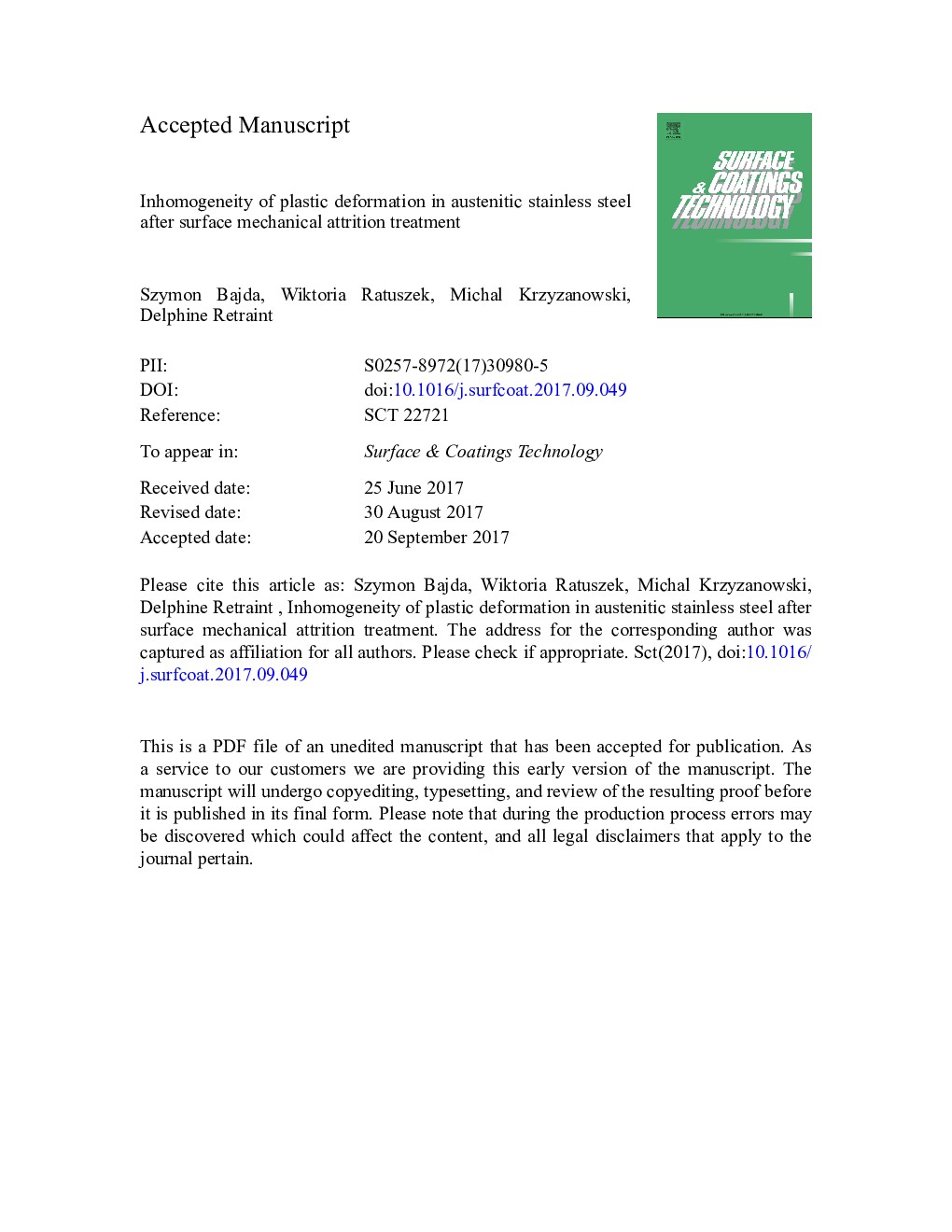| Article ID | Journal | Published Year | Pages | File Type |
|---|---|---|---|---|
| 5464428 | Surface and Coatings Technology | 2017 | 51 Pages |
Abstract
Inhomogeneity of microstructure evolution in cold-rolled austenitic stainless steel after surface mechanical attrition treatment (SMAT) was investigated. A characteristic deformation pattern was obtained for all studied specimens. Selected areas were examined through X-ray diffraction (XRD) and scanning electron microscopy (SEM). Estimation of the αâ²-martensite volume fraction below the treated surfaces showed, that some of the studied areas are characterised by significant different amount of this phase (from 10 to 22% - BB, from 19 to 31% - GIXD). The performed finite element (FE) numerical analysis showed, that the reason for this may be the presence of an air gap between the impacted material and fixation and also relatively short high stress time duration due to surface inclination during the surface treatment. Annealing at 550 and 650 °C greatly increased the volume fraction of αâ²-martensite (up to 47% - BB) and formed Fe2O3 as well as Fe3O4, whereas annealing at 700 °C resulted in both disappearance of αâ²-martensite and in reduction of oxides.
Keywords
Related Topics
Physical Sciences and Engineering
Materials Science
Nanotechnology
Authors
Szymon Bajda, Wiktoria Ratuszek, Michal Krzyzanowski, Delphine Retraint,
